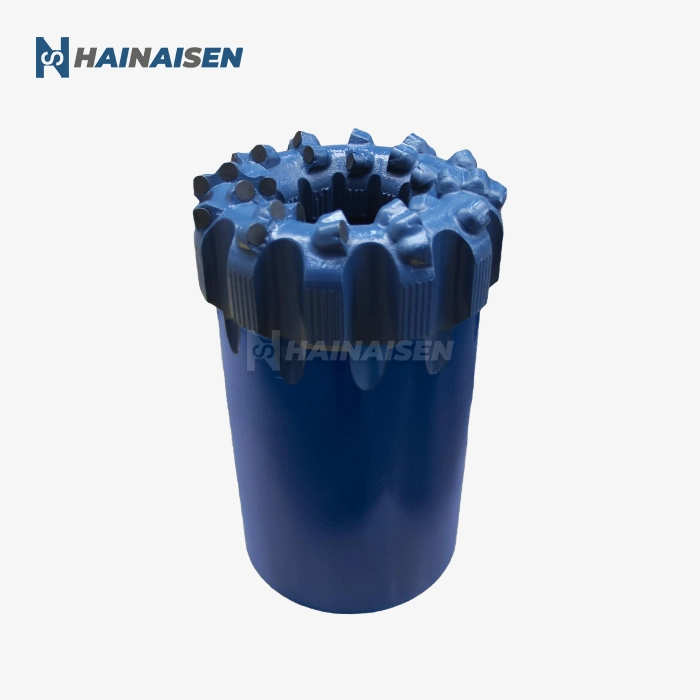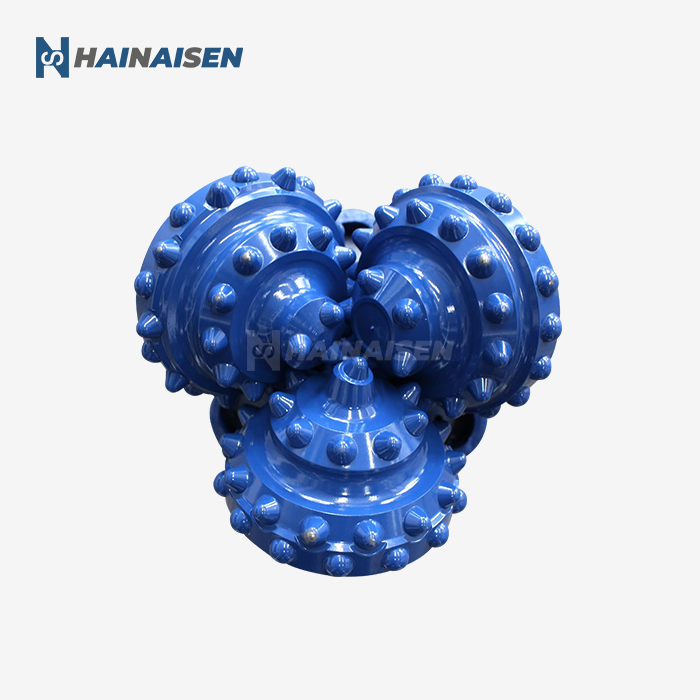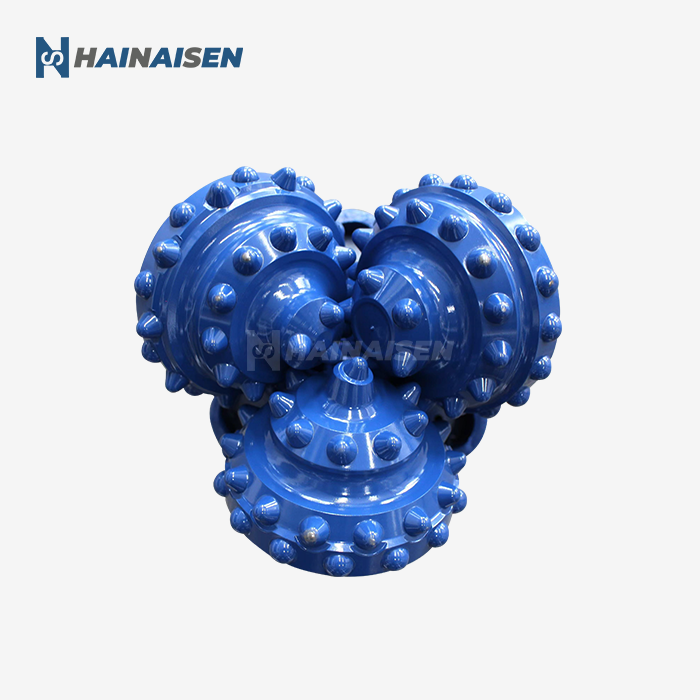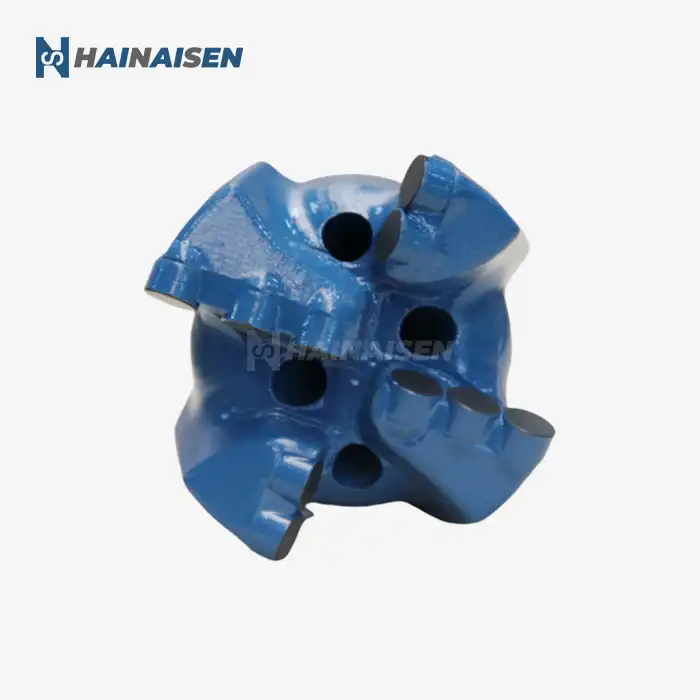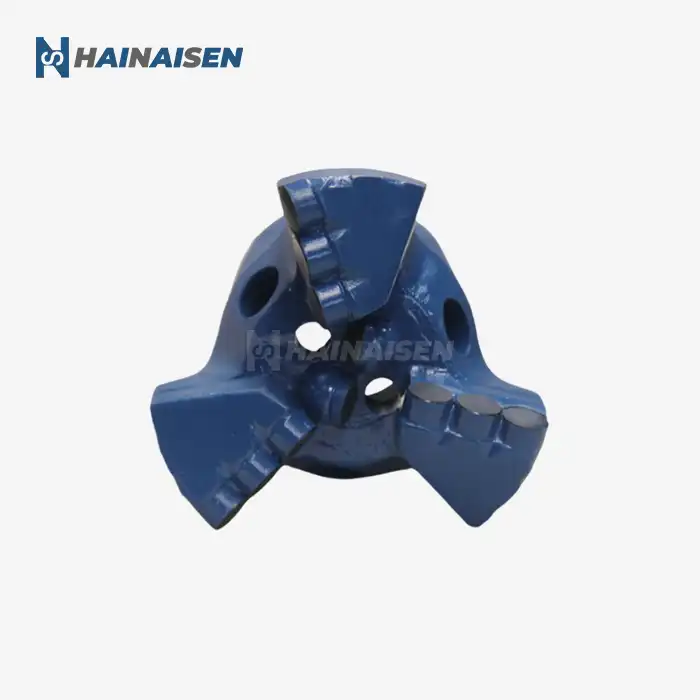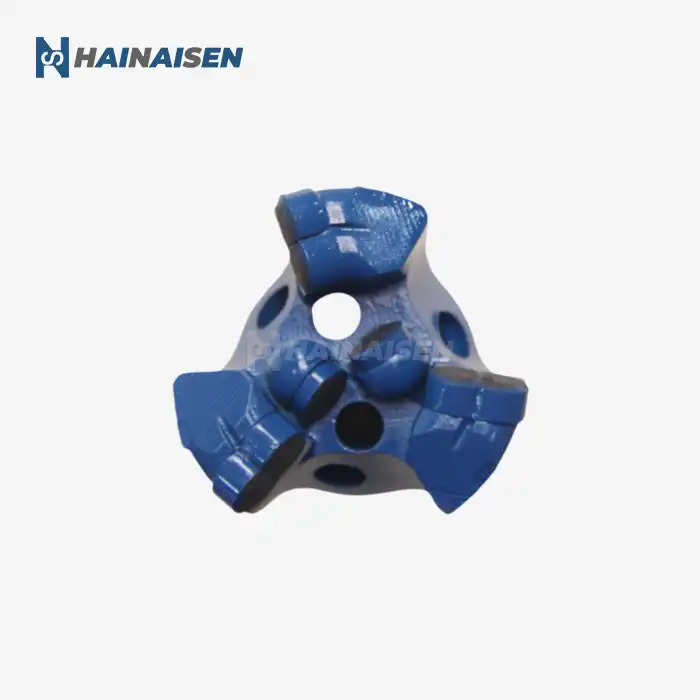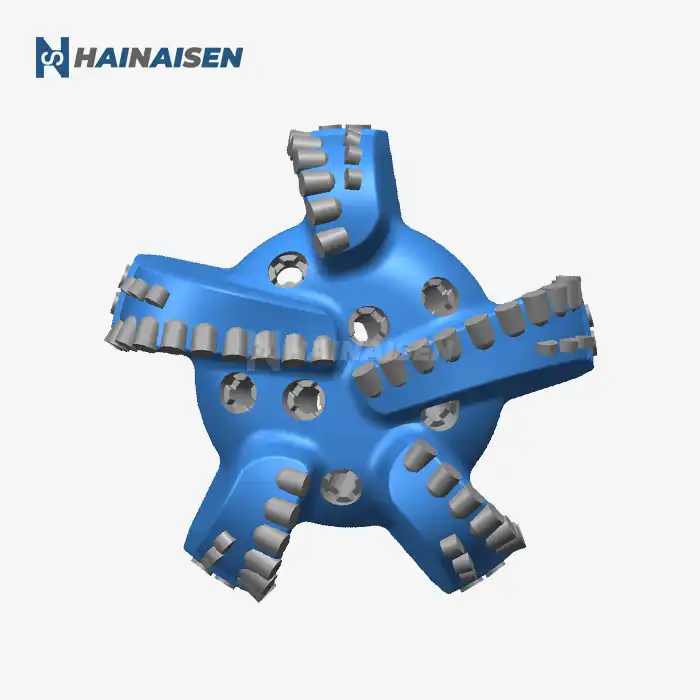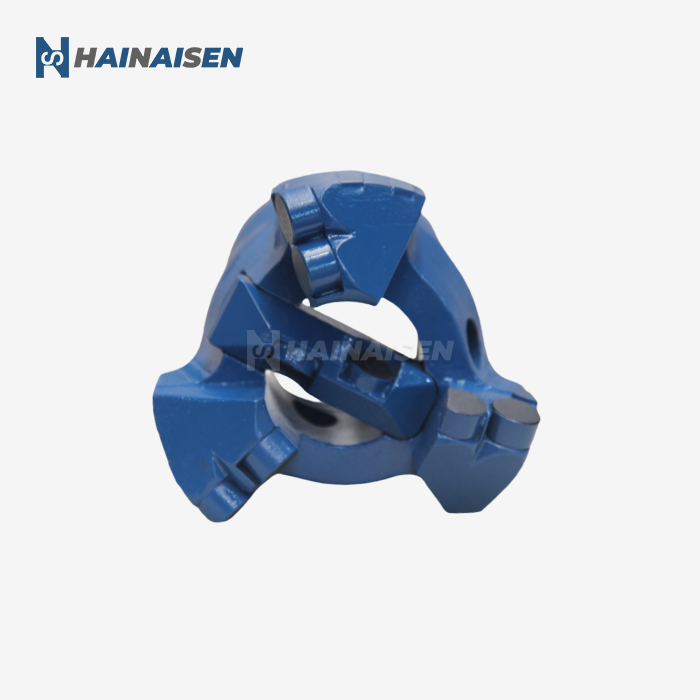Cutter Spalling, Edge Chipping, and Thermal Degradation
PDC bit failures often stem from three primary mechanisms: cutter spalling, edge chipping, and thermal degradation. Each of these failure modes can significantly reduce bit performance and lifespan, making it essential for drilling teams to recognize and address these issues promptly.
Cutter Spalling
Cutter spalling occurs when small fragments of the PDC mining bit cutter break off during drilling operations. This failure mode is typically caused by excessive impact forces or thermal stress. Spalling can lead to reduced cutting efficiency and accelerated wear of the remaining cutter surface. To mitigate cutter spalling, consider:
- Optimizing WOB and RPM parameters to reduce impact forces
- Implementing advanced cutter designs with improved impact resistance
- Utilizing specialized coatings to enhance thermal stability
Edge Chipping
Edge chipping is characterized by the fracturing of the cutter's outer edge, often resulting from high-stress concentrations during drilling. This failure mode can lead to reduced rate of penetration (ROP) and uneven wear patterns. To prevent edge chipping:
- Employ chamfered or rounded cutter edges to distribute stress more evenly
- Adjust bit design to optimize cutter placement and orientation
- Utilize advanced cutter materials with enhanced fracture toughness
Thermal Degradation
Thermal degradation occurs when PDC cutters are exposed to excessive heat during drilling operations. This can lead to graphitization of the diamond layer, resulting in rapid wear and reduced cutting efficiency. To combat thermal degradation:
- Implement effective cooling systems, such as optimized nozzle placement
- Utilize thermally stable PDC cutters with advanced binder materials
- Monitor and adjust drilling parameters to minimize heat generation

How Do WOB/RPM/Bit Aggressivity Drive Failure?
The interplay between weight on bit (WOB), rotations per minute (RPM), and bit aggressivity plays a crucial role in PDC mining bit performance and failure rates. Understanding these relationships is essential for optimizing drilling parameters and extending bit life.
Weight on Bit (WOB)
WOB directly influences the cutting force applied to the formation. Excessive WOB can lead to:
- Increased risk of cutter spalling and edge chipping
- Accelerated wear of the bit body and gauge protection
- Potential for bit whirl and vibration-induced damage
Conversely, insufficient WOB may result in poor penetration rates and inefficient cutting action. Striking the right balance is crucial for optimal bit performance and longevity.
Rotations Per Minute (RPM)
RPM affects the cutting velocity and heat generation at the bit-rock interface. High RPM can lead to:
- Increased thermal stress on PDC cutters
- Enhanced risk of thermal degradation
- Potential for excessive vibration and bit whirl
However, excessively low RPM may result in poor cleaning efficiency and reduced ROP. Finding the optimal RPM range for specific formation types is essential for maximizing bit life and performance.
Bit Aggressivity
Bit aggressivity, determined by factors such as cutter size, back rake angle, and blade design, influences the bit's cutting efficiency and stability. Highly aggressive bits can:
- Increase the risk of stick-slip and torsional vibrations
- Lead to accelerated wear in hard formations
- Potentially cause bit damage due to excessive torque
Balancing bit aggressivity with formation characteristics is crucial for optimizing drilling efficiency while minimizing failure risks.
Optimizing Drilling Parameters
To minimize PDC mining bit failures driven by WOB, RPM, and bit aggressivity:
- Implement real-time drilling optimization systems
- Utilize downhole measurement tools to monitor bit performance
- Develop formation-specific drilling parameter recommendations
- Regularly review and adjust drilling practices based on performance data
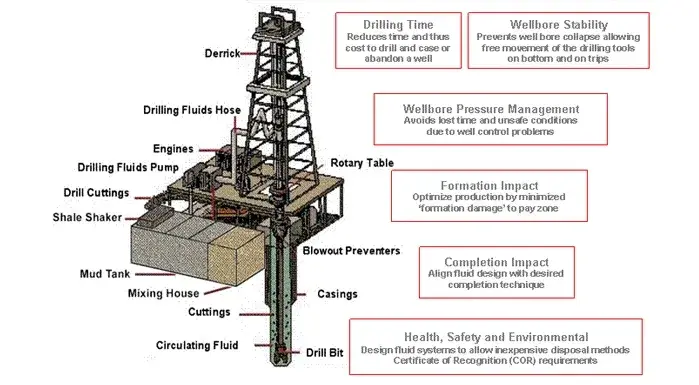
Hardfacing, Erosion Control, and Body Wear Mitigation
Implementing advanced protection techniques is essential for extending PDC mining bit life and maintaining optimal performance throughout drilling operations. Hardfacing, erosion control, and body wear mitigation strategies play crucial roles in preserving bit integrity and functionality.
Hardfacing Applications
Hardfacing involves applying wear-resistant materials to high-stress areas of the bit body. This technique offers several benefits:
- Enhanced protection against abrasive wear
- Improved resistance to impact damage
- Extended bit life in challenging formations
Advanced hardfacing materials, such as tungsten carbide composites, can be strategically applied to blade surfaces, gauge pads, and other vulnerable areas to significantly improve bit durability.
Erosion Control Strategies
Erosion caused by high-velocity fluid flow and abrasive particles can severely damage bit components. Effective erosion control measures include:
- Optimized hydraulics design to reduce fluid velocities in critical areas
- Implementation of flow diverters and protective shields
- Utilization of erosion-resistant materials in high-wear zones
By minimizing erosion damage, these strategies help maintain bit geometry and hydraulic efficiency throughout the drilling process.
Body Wear Mitigation Techniques
Protecting the bit body from excessive wear is crucial for maintaining structural integrity and performance. Key mitigation techniques include:
- Advanced blade designs to optimize stress distribution
- Incorporation of wear-resistant inserts in high-contact areas
- Utilization of specialized coatings to reduce friction and wear
These techniques work synergistically to preserve bit profile and extend operational life, particularly in abrasive formations.
Integrated Protection Strategies
To maximize PDC mining bit longevity and performance, consider implementing a comprehensive protection strategy that combines:
- Customized hardfacing patterns based on formation characteristics
- Advanced hydraulics modeling to optimize erosion control
- Tailored body wear protection for specific drilling applications
- Regular bit inspections and wear analysis to refine protection measures
By integrating these protection strategies, drilling teams can significantly reduce bit failures, improve overall drilling efficiency, and minimize costly downtime.
Conclusion
Understanding and addressing PDC mining bit failure modes is crucial for optimizing drilling operations across various industries. By implementing effective prevention strategies, such as optimizing drilling parameters, utilizing advanced protection techniques, and employing customized bit designs, drilling professionals can significantly extend bit life and improve overall project efficiency.
At Shaanxi Hainaisen Petroleum Technology Co., Ltd., we specialize in developing cutting-edge PDC drill bits tailored to meet the unique challenges of diverse drilling applications. Our expert team leverages years of industry experience and advanced manufacturing capabilities to deliver high-performance bits that maximize durability and efficiency.
Whether you're involved in oil and gas exploration, coal mining, or geological surveying, our customized solutions can help you overcome the toughest drilling challenges. Take the next step in optimizing your drilling operations by partnering with Shaanxi Hainaisen Petroleum Technology Co., Ltd. Contact us today at hainaisen@hnsdrillbit.com to discuss how our innovative PDC mining bit solutions can revolutionize your drilling projects.
References
1. Smith, J.R. (2021). Advanced PDC Bit Design for Enhanced Durability in Mining Applications. Journal of Mining Engineering, 45(3), 178-192.
2. Johnson, A.B., & Williams, C.D. (2020). Thermal Degradation Mechanisms in PDC Cutters: A Comprehensive Review. International Journal of Rock Mechanics and Mining Sciences, 87, 104-118.
3. Thompson, R.L., et al. (2022). Optimizing Weight on Bit and RPM for Extended PDC Bit Life in Hard Rock Formations. SPE Drilling & Completion, 37(2), 215-229.
4. Chen, X., & Liu, Y. (2019). Novel Hardfacing Materials for PDC Bit Body Protection: A Comparative Study. Wear, 426-427, 1521-1533.
5. Martinez, A., et al. (2023). Real-Time Drilling Optimization Systems: Enhancing PDC Bit Performance in Mining Operations. Mining Technology, 132(1), 45-58.
6. Wang, H., & Zhang, L. (2021). Erosion Control Strategies for PDC Bits in Abrasive Formations: A Numerical and Experimental Investigation. Journal of Petroleum Science and Engineering, 196, 107661.



